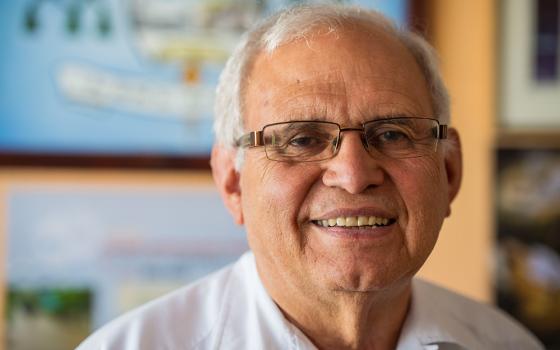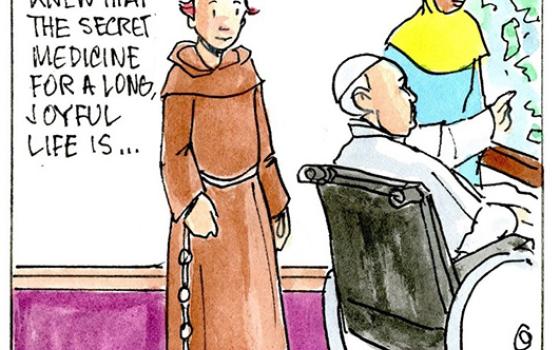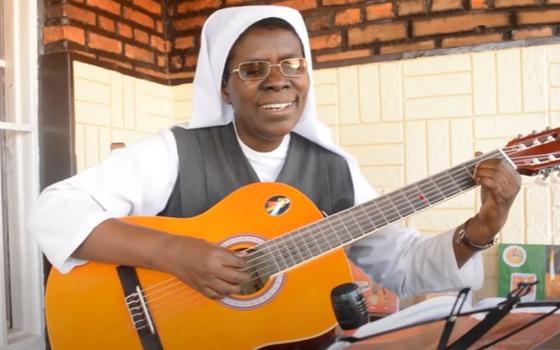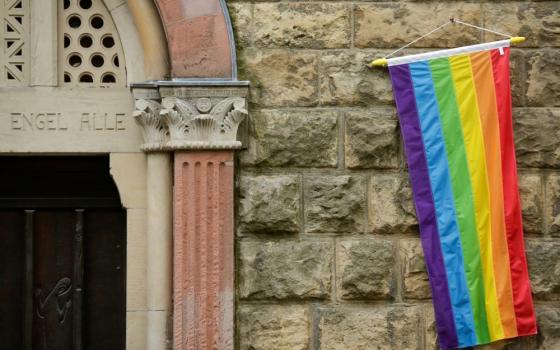Predictions are always hazardous, but here's one I feel pretty good about: 2011 will be remembered as the year when religious freedom came into focus as the premier social and political concern of the Catholic church in the early 21st century.
Ferment is everywhere. Across the Middle East, fear about the aftermath of the Arab Spring grips the small but symbolically important Christian community. In the United States, the Catholic bishops have launched a new ad-hoc committee on religious freedom, girding up for a highly litigious season of church/state conflicts around matters such as conscience rights and the ability of religious organizations to hire and fire in keeping with their beliefs. From the Vatican, Swiss Cardinal Kurt Koch has proposed "ecumenism of the martyrs" as a new basis for Christian unity, reflecting the realities of anti-Christian persecution around the world.
The common denominator in each case is that, in some form, Christians believe their religious freedom to be at risk.
Given all that, it may seem like an exercise in stating the obvious to ask why defending religious freedom has reached the top of the church's to-do list. The simple answer: Because that's where the threat lies. (After all, nobody is really confused as to why the North was concerned with the Confederacy during the Civil War, or why the Americans were hung up on the Soviets during the Cold War.)
All the same, it's useful to identify some of the deep forces underlying today's concern with religious freedom -- if only to make the point that it's the result of long-term historic transitions, and thus unlikely to be a here-today, gone-tomorrow affair.
I see at least three such deep historical movements at work. (This week I gave a couple of lectures on religious freedom at the University of St. Thomas in Houston, under the aegis of its Center for Faith and Culture, where I was grateful for the chance to try out some of these ideas.)
The first such force is the transition in the West, meaning Europe and portions of North America, from Christianity as a culture-shaping majority to Christianity as a subculture. That shift has been underway for a long time, tied to the process of secularization, and has been memorably captured by Pope Benedict XVI in the idea that Christianity in the West today is destined to live as a "creative minority."
As a subculture, Christianity can no longer take the basic benevolence of the state, or the larger culture, for granted. In Catholic terms, this erosion of the traditional deference the church once enjoyed -- from politicians, the courts, the media, and other shapers of culture -- has been turbo-charged by the sexual abuse crisis.
Sociologically speaking, subcultures tend to be preoccupied, and not irrationally, with preserving their distinctive identity. They become vigilant about possible encroachments on that identity, especially by the state. That pretty much describes what's happening these days at the leadership level of the Catholic church, with the mounting concern with religious freedom as the tip of the spear.
Naturally, one can debate the particular issues flagged by the American bishops as religious freedom concerns, or the strategies they might pursue in addressing them. But at a purely descriptive level, there's little question they're right in assuming that serious legal and political battles are ahead. (As proof of the point, one of the first tasks of their new committee is to hire lawyers.)
A second force underlying today's ferment around religious freedom is the emergence of a truly global church, one in which two-thirds of the world's Catholic population lives in the southern hemisphere, a share that will reach three-quarters by mid-century.
As that demographic shift unfolds, it drives home the realization that a growing share of Catholics live in neighborhoods where they can't take religious freedom for granted.
In such locales, threats to religious freedom aren't about insurance mandates, or a "ministerial exception" to federal laws on hiring and firing. They're instead about direct threats to life and limb, as believers take their lives in their hands every time they go to worship, or open their businesses, or for that matter just walk down the street.
The most harrowing such case these days is probably Iraq, which has lost an estimated two-thirds of its Christian population since the first Gulf War in 1991 -- in other words, in the arc of just two decades. Much of that collapse is due to the violence and instability that afflicts all Iraqis, but there's no denying that the proliferation of radical Islamic groups and their repeated assaults on Christian churches, businesses and individuals is also a powerful force underlying the exodus.
Iraq is hardly the only example. From the Middle East to the Indian subcontinent, from parts of sub-Saharan Africa to regions of East Asia, millions of Christians are under threat, and thousands have already paid in blood for their refusal to part company with the faith -- a whole "new generation of martyrs," as Koch recently put it.
In a Catholic church in which intellectual vision, political momentum, and pastoral priorities increasingly bubble up from the global south, religious freedom will be set in cement as a top-shelf concern.
A third force driving the emergence of religious freedom is the historic shift underway in Catholicism from Judaism to Islam as the church's paradigmatic, or defining, interreligious relationship.
In the decades following the Second Vatican Council (1962-65), the relationship with Judaism clearly was Catholicism's touchstone inter-faith dialogue -- meaning the one which drew the greatest share of time and treasure, and set the tone for all the rest. Today that pride of place is increasingly being claimed by Islam, a shift which is clear both at the top of the church, in terms of where the Vatican invests its inter-faith capital, and at the bottom, in the wide ferment over Islam in Catholic circles.
One implication is a sea change in Catholic psychology vis-à-vis inter-faith dialogue. As long as Judaism was the prism, the Catholic inclination was to begin every dialogue with an examination of conscience: What's wrong in Christian thought or practice, what needs to be reformed or removed, in order to make this relationship work? In light of centuries of Christian anti-Semitism and the legacy of the Shoah, obviously, that self-critical impulse made eminent sense.
As Islam becomes the paradigmatic relationship, however, Catholic psychology has begun to shift. Today, Catholics are less inclined to assume that the problem lies on their side of any inter-faith dialogue; they've become more inclined to point to distortions and excesses on the other side as well. That's a prescription for a more balanced and substantive, but also more combustible, form of dialogue.
By far, the most common area where one sees this new Catholic willingness to push back is religious freedom, and not just in the relationship with Islam. It also surfaces, for instance, in the dialogue with Hinduism, given the alarming spread of Hindu nationalism and radicalism in some regions of India. The worry is that violent anti-Christian pogroms that broke out in the state of Orissa in 2008 may be a preview of coming attractions.
No matter what else happens, there's little reason to believe that these three root forces -- secularization in the West, the north-south shift in Catholic demography, or the global preoccupation with Islam -- are likely to reverse course anytime soon.
If so, then religious freedom as a Catholic idée fixe is here to stay.
* * *
I mentioned above that I was on the road this week at the University of St. Thomas in Houston. Formally speaking, I delivered the "Archbishop Joseph A. Fiorenza Lecture," and the 80-year-old archbishop and former president of the U.S. bishops' conference, now retired, was on hand for the event.
Fiorenza is a compelling story; we're talking about a man who, as a young priest, participated in the Selma to Montgomery civil rights marches, and who was present in Rome for the final session of the Second Vatican Council (1962-65). He became a bishop in 1979, and won the trust of other bishops around the country for his integrity and balance. He was elected president of the U.S. bishops' conference in 1998. There isn't a single question or crisis to face the American church over the last four decades in which Fiorenza hasn't played an important role, sometimes out front and sometimes behind the scenes.
Despite all that, Fiorenza is not the kind of guy to wear his accomplishments on his sleeve. At a small dinner Tuesday night, for instance, speaking about his time in Rome during Vatican II, he emphasized how minor a role he had played: "I was there to help my bishop, who by that time was almost blind," Fiorenza said. "Basically, I was a seeing-eye dog."
I'm pleased to report that Fiorenza seems in good shape and spirits, and retains a lively curiosity about all things Catholic. He's still trying to help keep the center afloat in the church, still showing that it's possible to be both unmistakably Catholic and also unfailingly open.
He's also, by the way, clearly mastered the difference between being a sitting archbishop and a retired one. He said he recently turned down an invitation to an event, and, pressed to explain why he couldn't go, realized that he no longer had to come up with a plausible excuse so his absence wouldn't reflect badly on the church or the archdiocese.
Instead, he said, he could simply tell the truth: "I'd rather watch Notre Dame play football on TV!"
* * *
In addition to the University of St. Thomas, I also spoke this week at the Shrine of Our Lady of the Snows in Belleville, Illinois, run by the Oblates, and Mercyhurst College in Erie, Pennsylvania, founded by the Sisters of Mercy. In each locale I found smart, highly engaged audiences, full of fun-loving folks who know the church faces steep challenges but who are also capable of a sense of humor about its vicissitudes.
Belleville, of course, lies in the environs of St. Louis, and after that gig a reporter from the St. Louis Post-Dispatch wanted to ask me a few questions about the state of the church. One was the following: "What do you think the Catholic church does best and doesn't get much credit for?"
Here's what I said.
"Fundamentally, I don't think the Catholic church gets enough credit for being a hell of a lot of fun. There's great warmth and laughter in most Catholic circles, a rich intellectual tradition, a vast body of lore, an incredible range of characters, a deep desire to do good, an abiding faith against all odds, an ability to go anywhere and feel instantly at home, and even a deep love of good food, good drink, and good company. All that is part of the tapestry of Catholic life, but it rarely sees the light of day in commentary and reporting that focuses exclusively on crisis, scandal, and heartache."
My thanks to the good people of Houston, Belleville and Erie for confirming the truth of that observation one more time.
[John L. Allen Jr. is NCR senior correspondent. His e-mail address is jallen@ncronline.org.]




